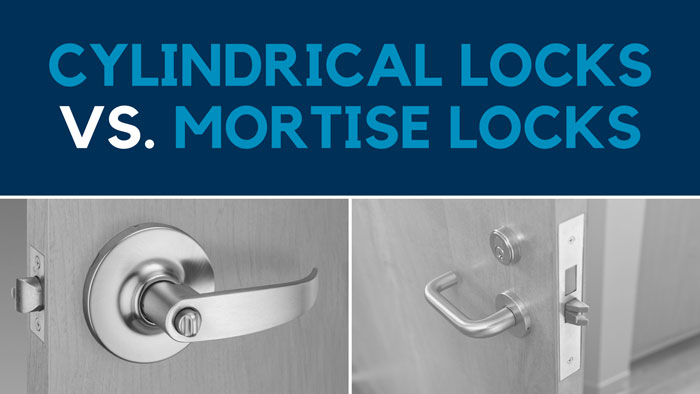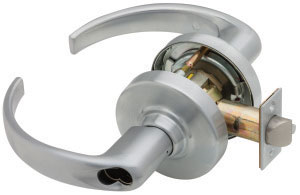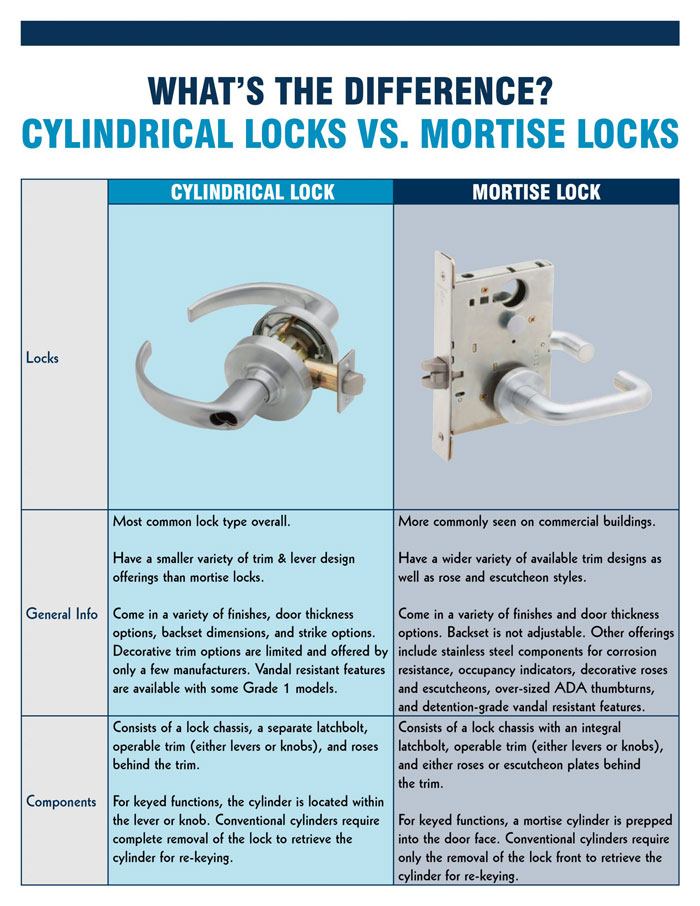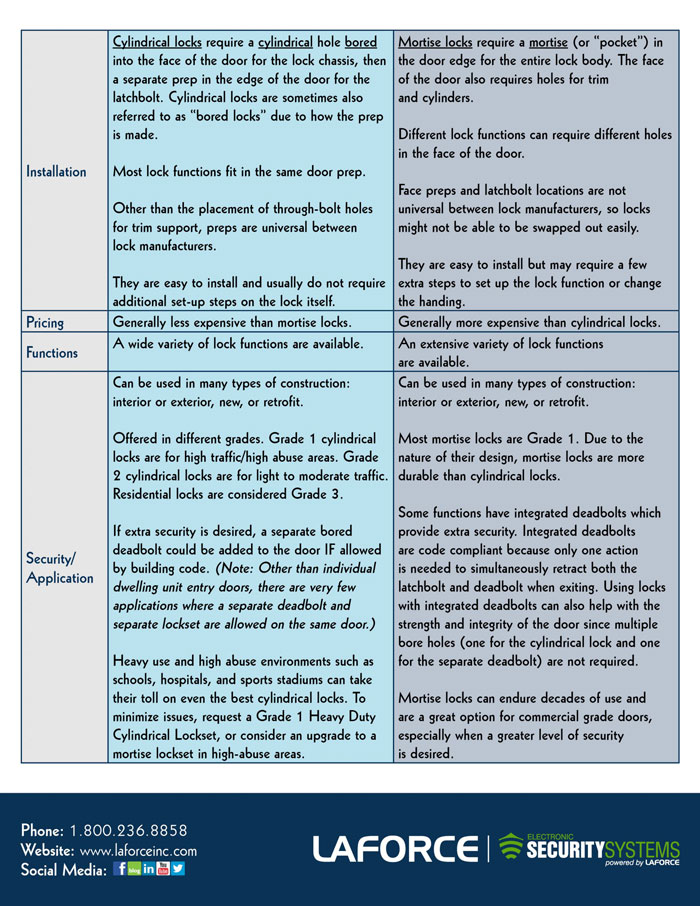Two of the most common locks used in commercial construction are mortise locks and cylindrical locks. We have outlined the details for both locks and included a side-by-side comparison to help you learn the difference and choose the right one for your building.
Mortise Door Locks
What is a Mortise Lock?
- Mortise locks are commonly seen on commercial buildings.
- They have a wider variety of available trim designs as well as rose and escutcheon styles compared to cylindrical locks.
- They come in a variety of finishes and door thickness options.
- Backset is not adjustable.
- Other offerings for mortise locks include stainless steel components for corrosion resistance, occupancy indicators, decorative roses and escutcheons, over-sized ADA thumbturns, and detention-grade vandal resistant features.
What are the components of a Mortise Lock?
- Mortise locks consist of a lock chassis with an integral latchbolt, operable trim (either levers or knobs), and either roses or escutcheon plates behind the trim.
- For keyed functions, a mortise cylinder is prepped into the door face.
- Conventional cylinders require only the removal of the lock front to retrieve the cylinder for re-keying.
How to install a Mortise Lock?
- Mortise locks require a mortise (or “pocket”) in the door edge for the entire lock body.
- The face of the door also requires holes for trim and cylinders.
- Different lock functions can require different holes in the face of the door.
- Face preps and latchbolt locations are not universal between lock manufacturers, so locks might not be able to be swapped out easily.
- They are easy to install but may require a few extra steps to set up the lock function or change the handing.
How much do Mortise Locks cost?
- They are generally more expensive than cylindrical locks.
What are the benefits to Mortise Lock?
- Mortise locks can be used in many types of construction: interior or exterior, new, or retrofit.
- Most mortise locks are Grade 1. Due to the nature of their design, mortise locks are more durable than cylindrical locks.
- Some functions have integrated deadbolts which provide extra security.
- Integrated deadbolts are code compliant because only one action is needed to simultaneously retract both the latchbolt and deadbolt when exiting.
- Using locks with integrated deadbolts can also help with the strength and integrity of the door since multiple bore holes (one for the cylindrical lock and one for the separate deadbolt) are not required.
- Mortise locks can endure decades of use and are a great option for commercial grade doors, especially when a greater level of security is desired.
Cylindrical Door Lock
What is a Cylindrical Lock?
- These are the most common lock type overall.
- They have a smaller variety of trim & lever design offerings than mortise locks.
- They come in a variety of finishes, door thickness options, backset dimensions, and strike options.
- Decorative trim options for cylindrical locks are limited and offered by only a few manufacturers.
- Vandal resistant features are available with some Grade 1 models.
What are the components of a Cylindrical Lock?
- Cylindrical locks consist of a lock chassis, a separate latchbolt, operable trim (either levers or knobs), and roses behind the trim.
- For keyed functions, the cylinder is located within the lever or knob.
- Conventional cylinders require complete removal of the lock to retrieve the cylinder for re-keying.
How to install a Cylindrical Lock?
- Cylindrical locks require a cylindrical hole bored into the face of the door for the lock chassis, then a separate prep in the edge of the door for the latchbolt.
- Cylindrical locks are sometimes also referred to as “bored locks” due to how the prep is made.
- Most lock functions fit in the same door prep.
- Other than the placement of through-bolt holes for trim support, preps are universal between lock manufacturers.
- They are easy to install and usually do not require additional set-up steps on the lock itself.
How much do Cylindrical Locks cost?
- They are generally less expensive than mortise locks.
What are the benefits to Cylindrical Lock?
- Cylindrical locks have a wide variety of lock functions available.
- They can be used in many types of construction: interior or exterior, new, or retrofit.
- They are offered in different grades.
- Grade 1 cylindrical locks are for high traffic/high abuse areas.
- Grade 2 cylindrical locks are for light to moderate traffic.
- Residential locks are considered Grade 3.
- If extra security is desired, a separate bored deadbolt could be added to the door IF allowed by building code.
- Other than individual dwelling unit entry doors, there are very few applications where a separate deadbolt and separate lockset are allowed on the same door.
- Note: heavy use and high abuse environments such as schools, hospitals, and sports stadiums can take their toll on even the best cylindrical locks.
- To minimize issues, request a Grade 1 Heavy Duty Cylindrical Lockset, or consider an upgrade to a mortise lockset in high-abuse areas.
The experts at LaForce can work with you to decide which lock is the best choice for your facility and your budget. We can even pre-install hardware onto your doors before they are delivered! Contact us today; we would love to help you with your next project.







Follow Us